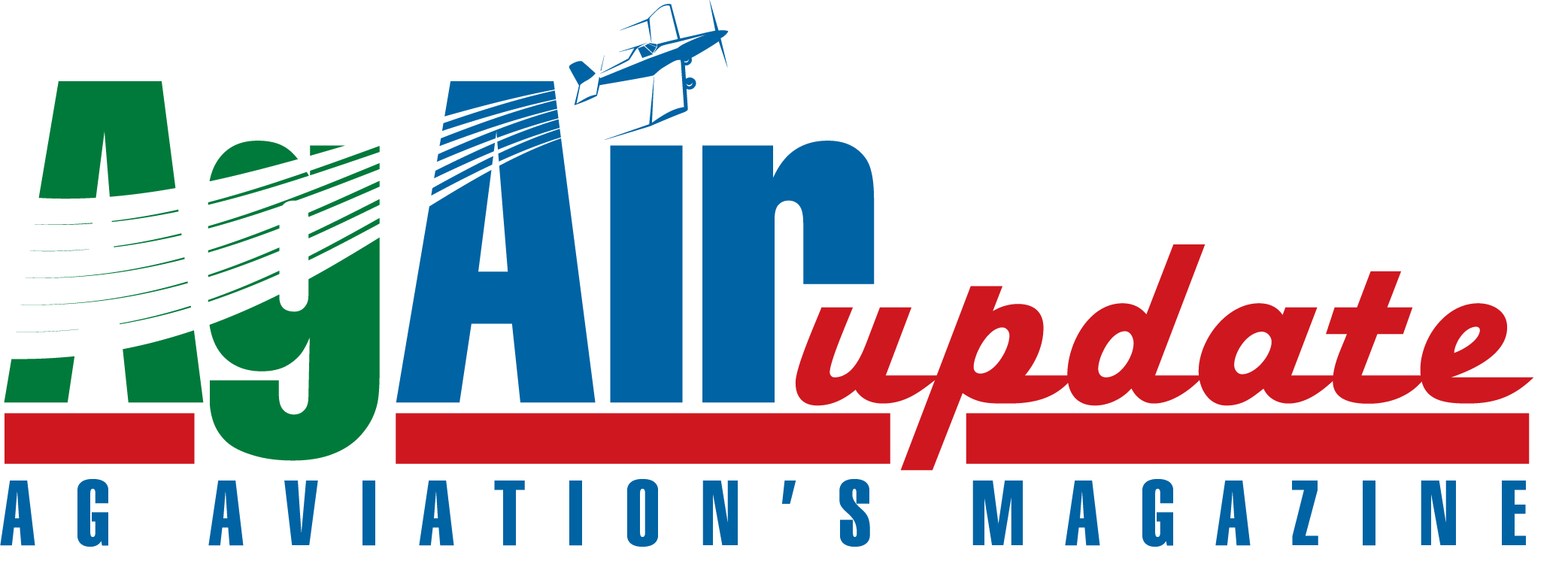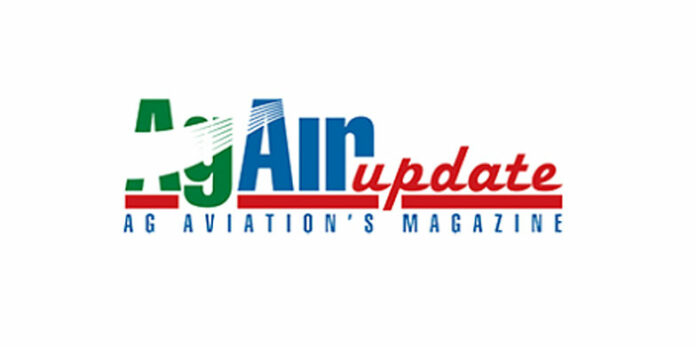The National Agricultural Aviation Association is pleased to announce its 2017 officer team, led by NAAA President Dominique Youakim. Serving alongside Youakim are Vice President Gary Jerger, Secretary Mark Kimmel and Treasurer Jim Perrin.
Let’s meet this year’s officers, shall we?
President Dominique Youakim (Illinois)
As far as gavel passes go, the handoff from outbound president Brenda Watts to incoming president Dominique Youakim was about as easy as it gets, considering that Youakim served as Watts’s vice president in 2016. Now, Youakim feels humbled and honored by the even greater opportunity to serve members as NAAA’s 2017 president. He is well-qualified for the post.
Youakim owns and operates Aerinova Aerial LLC, an aerial application business in Mattoon, Ill. He also owns a helicopter tour business in St. Louis and Branson, Mo., and is an authorized Robinson helicopter dealer.
Before finding his niche as an aerial applicator, Youakim worked in corporate America as a vice president of operations for a manufacturing plant. He worked for the manufacturer from 1995 to 2005. During that same period, he earned his commercial pilot certificate. Ready for a less travel-intensive career, Youakim gave up his corporate job for the opportunity to become an agricultural pilot in 2005. His mentor, Rick Reed of Reed’s Fly-on Farming, hired him as a full-time pilot that year. In 2013, Youakim purchased Reed’s Mattoon-based operation, which now operates under the name Aerinova Aerial LLC.
In 2006, Youakim entered the NAAA/Syngenta Leadership Training Program, which develops new leaders and advocates for the agricultural aviation industry. He served as secretary/treasurer of the Illinois Agricultural Aviation Association in 2007–2008. He joined NAAA’s board of directors as the Illinois AAA’s state representative in 2009. From 2012 to 2016, Youakim chaired NAAA’s bylaws committee. In 2014, he was instrumental in revising and merging the association’s constitution and bylaws into one set of governing documents. He received the distinguished Falcon Pin from NAAA’s 2014 president for his exceptional work on the constitution and bylaws merger.
As president, Youakim looks forward to promoting the benefits of agricultural aviation. “We need to enhance our professionalism and be active with promoting positive public relations about our industry to ensure our existence,” he said. “This is especially important when you consider the number of folks out there that don’t know or understand our industry.”
Low commodity prices put a crimp on the amount of hours and acres ag aviation operations amassed in 2016, but Youakim remains bullish about aerial applicators’ future. “The industry has a very strong future as long as we can get our yield results and efficacy results through to farmers.”
Vice President Gary Jerger (Minnesota)
NAAA’s new vice president is no stranger to the association’s executive leadership team. After serving as NAAA treasurer in 2015, this is the third year in a row that Gary Jerger will be a member of NAAA’s Executive Committee. The seven-member Executive Committee is made up of NAAA’s current officers, the immediate past president, the immediate past treasurer—which Jerger was in 2016—and the president of NAAREF, NAAA’s sister foundation.
Jerger is humbled that NAAA’s Nominating Committee thought enough of him to ask him to serve as an officer again this year. He also feels emboldened by their belief in him. “Everybody’s got different qualities,” Jerger says. “I think people see qualities in me that I don’t see in my myself. I don’t want to be one who says I can do this or that, but when someone gets behind me and says I can do this, that gives me the strength to move on.”
Jerger chaired NAAA’s Membership Committee last year, and he remains committed to seeing membership grow in 2017. About 55 percent of all eligible operators and ag pilots in the United States are members of NAAA. It’s going to take a collective effort to keep after that other 45 percent. “I really believe that each and every member needs to be asking, whether it’s a competitor or a friend, to get them to join their association. That’s going to give us a larger voice in Washington,” he says.
Jerger has a single-plane operation. His season starts in mid-April and runs until the end of September. He’ll generally start with cover crops and then work into light herbicide work if the conditions are wet enough in the Red River Valley of Minnesota and North Dakota. Jerger also sprays fungicides on hard red spring wheat and does insecticide work on wheat and soybeans. He usually wraps up his season by spraying fungicides on sugar beets.
Secretary Mark Kimmel (Mississippi)
Mark Kimmel was born into the aerial application industry as the progeny of agricultural aviation royalty in Mississippi. His father, Stewart Kimmel, served on the board of NAAA and as president of the Mississippi Agricultural Aviation Association, a position Mark has held too. His mother, Dorothy, served as the president of NAAA’s women’s auxiliary, the WNAAA, in 1992. For a time, three of the Kimmel brothers, Mark included, flew for the same operator as ag pilots.
To say that Mark Kimmel is entrenched in NAAA and its counterpart, the Mississippi AAA, would be an understatement, so suffice it say he was honored to be asked to serve as NAAA’s 2017 secretary. “I was proud to carry on their tradition and their involvement in the association, because they always held it very high, as do I,” he said of following in his parents’ footsteps.
Kimmel moved from the hills of Mississippi to Itta Bena, Miss., in the Delta region with his wife in 1986 because his father-in-law had a flying service and a farm there. Dixie Dusters Inc. grew under Kimmel’s stewardship to the point that he has two pilots now and two Air Tractor 502s. Kimmel hasn’t flown the ag planes himself in a long time because he has 3,000 acres of cotton, corn and soybeans to farm. “I kind of worked my way out of that seat,” he says with a chuckle.
Kimmel served as the vice chairman and chairman of the NAAA Museum Committee, respectively, in 2015 and ’16, where he has worked to strengthen the relationship between NAAA and the National Agricultural Aviation Museum and Hall of Fame, which is based in Jackson, Miss., and housed inside the Mississippi Agriculture and Forestry Museum. With a complete renovation about to get underway, soon the agricultural aviation museum will be even better. “It’s going to be a wonderful museum, and the museum director wants the aviation part of the museum to be the main attraction,” Kimmel said.
Treasurer Jim Perrin (Wisconsin)
Jim Perrin has experienced good times and bad times during his career as an aerial applicator. One of the things that has sustained him, no matter the circumstances, is his sense of humor. Perrin took that advice to heart when his mentor, the late Harold Miller, shared it with him. “He said as long as I keep a sense of humor that no matter how bad things got, I’d be just fine. I’ve tried to remember that through some of the tougher times.”
Perrin has been an agricultural pilot since 1991 and an aerial application operator since 1995. He was an operator in Illinois from 1995 to 2001. Before the 2002 season, he sold his operation in Illinois and seized an opportunity to return to his home state. Perrin bought an operation he had flown for previously in the Central Sands area of Wisconsin. One reason he bought the Bancroft, Wis., operation, now known as Agricair Flying Service, was because he wanted to spray vegetable crops. He primarily treated corn in Illinois. In Wisconsin potatoes are Agricair’s main spray crop followed by sweet corn, carrots, peas and green beans.
Perrin has been an active member of NAAA and the Wisconsin Agricultural Aviation Association for years. In 1998, he went through the NAAA/Syngenta Leadership Training Program. He joined NAAA’s board of directors as Wisconsin’s state representative in 2013 and has served on several committees, including NAAA’s budget and finance, bylaws, communications and membership committees.
As NAAA’s treasurer, Perrin hopes that aerial applicators will continue to make an investment for themselves and the industry by maintaining their membership in NAAA, despite recent slowdowns in the ag economy. “I honestly can’t comprehend why an operator wouldn’t be a member,” he says. “NAAA has done so much for each and every operator. The small amount of dues, it’s insignificant compared to what the NAAA has done to keep us in business.”
Strength in Numbers: Join NAAA
NAAA is fortunate to have a dedicated group of officers and volunteer leaders serving on its board of directors, but there is also strength in numbers. If you aren’t a member, the single-most effective way you can address the range of critical issues facing your business is by joining NAAA. The payoff far exceeds what you will spend in dues in the form of effective advocacy, national representation, education and safety programs and the personal connections you will make as you participate in association activities.
To join, call 202-546-5722 or visit AgAviation.org/membership. As an added bonus, all new and renewing members in 2017 will receive a DVD of NAAA’s 50th anniversary documentary.
*_photo_1_*





